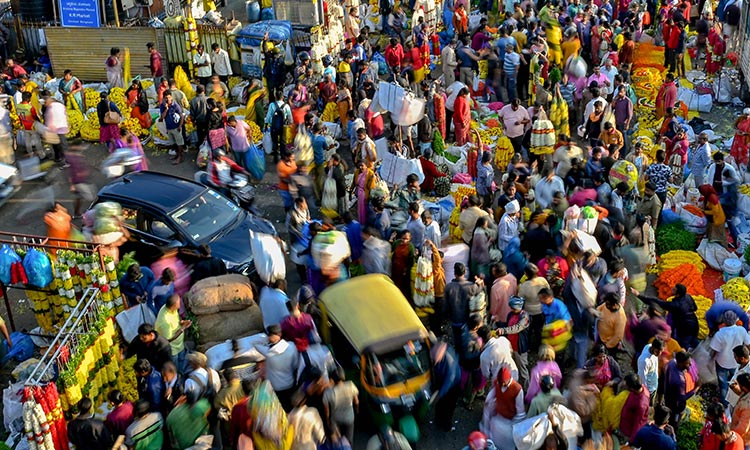Changing graph of world population

The world population is estimated to cross the 9-billion mark by 2050.
The United Nations-demarcated World Population Day on July 11 prompted a relook at the figure of the number of people in the world, and how each country is faring. The world’s population has now crossed eight billion, and it is projected that it will reach 9.7 billion by 2050.
The world’s population was 2.8 billion in 1955. So, in 58 years, the world’s population trebled. But the population growth is slowing down now across many countries, though the numbers in individual countries are growing. It is reckoned that 367 million babies were born in 2022, which works out to 367,000 babies a day. On the face of it, this is a huge number. But 2022 has witnessed the lowest growth rate in births since 2001.
Experts are of the view that the world population is going to level off in this century, though it is not certain what the principles underlying population dynamics are. The birth rates are falling even in the two most populous countries, India and China, though their population remains in the billion plus table. There are surprises as to which countries will figure in the most populous countries table. The United States has been the third most populous country in the world, a distant third after India and China with a population figure of 336 million will drop to the fourth place by 2050 with a population of 375 million. The third position will then be occupied by Nigeria with a population of 377 million in 2050, jumping from its present figure of 218 million.
Pakistan will emerge as the fourth populous nation with 367 million people in 2050, while its population at present is 235 million. It can be seen that the United States will have grown the slowest among the top five countries. China’s population would have fallen from 1.42 billion to 1.31 in 2050, while India’s population would have grown from 1.41 billion in 2022 to 1.67 billion in 2050.
The greatest increase in population numbers is happening in countries like Nigeria, Pakistan, Democratic Republic of Congo and Ethiopia. The question is whether the economic growth will match the population growth in these countries in the next 28 years. This will be the challenge. And in the context of climate change, these countries with larger number of people and with low Gross Domestic Product (GDP) will be under greater pressure because the largest number of poor people will be found in these countries. There is also the other paradox. Europe and East Asia will experience the lowest population growth in the next 27 years, and the fall in population may negatively affect the economic growth rate in these two regions which have experienced rapid economic growth in the last half-century.
It seems that there is a need to work out the ideal balance between population and economic growth rate to ensure that the quality of life as well as the cost of living are at par with each other. This will indeed be a utopian situation, and the present trends indicate that economic growth across the world will be unequal, and there will be more poor people in the most populous countries and many of the rich countries in Europe and East Asia might still hold on to their prosperity, though it would be an increasingly perilous situation.
It is now recognised that no country or region can cope with the climate change challenge on its own and there is need for a collective response. In a similar manner, it might be necessary to think of a collective response to the challenge posed by population growth in the world, more in some countries and regions and less in other parts. There is need for coordination among the countries to tackle the population challenge of creating livelihoods and ensuring health and education for all.







